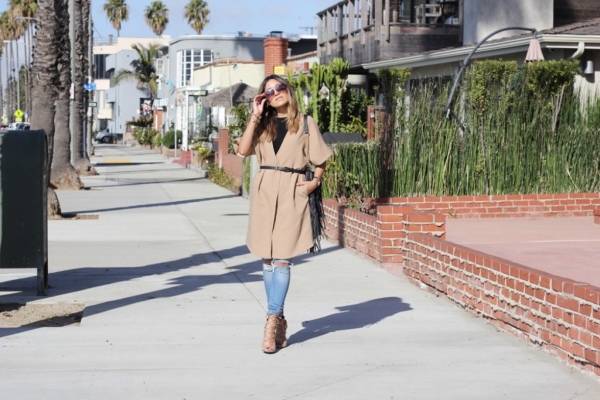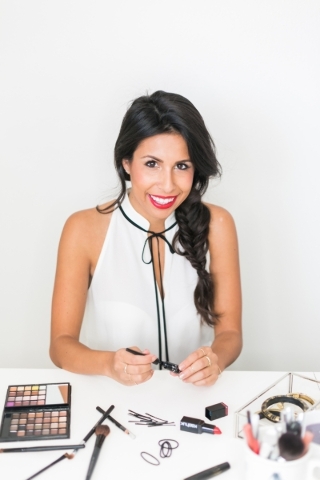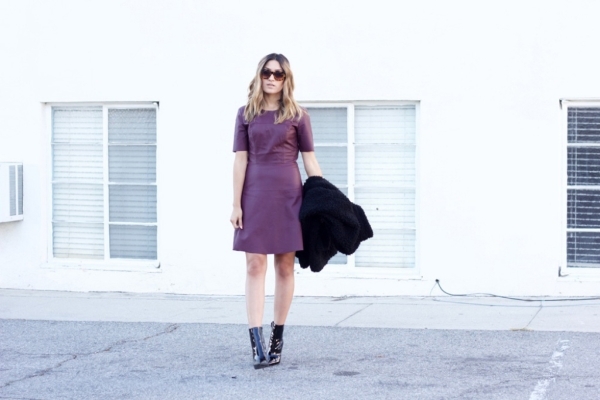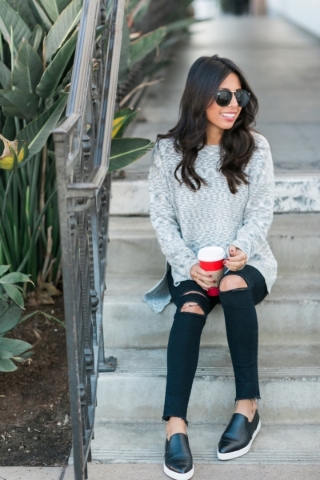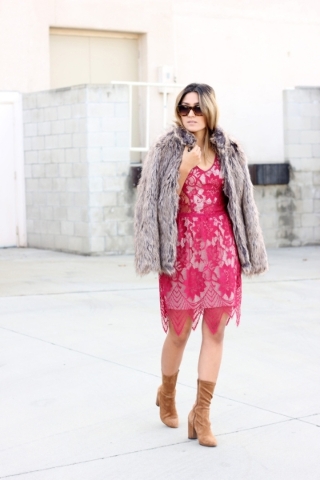Fashion influencers make you want to be like them
At the annual MAGIC fashion convention, the new normal is Ashley Torres, a woman who gets paid by companies to blog and do social media about their clothes, food and lifestyle products.
"My parents are in their 50s," Torres tells me, "and it blows their minds. They're like, 'Wait, you're making a living off of posting pictures of yourself wearing somebody's shirt?'"
Torres gets paid by the hour and/or commission to wear brands' clothing, eat their food, drink their drinks, stay in their hotels, and post photos in order to influence followers to follow suit.
Companies also pay Torres to headhunt and wrangle fellow influencers on their brands' behalf, making her a rare "influencer-influencer."
It takes a skill set to wake up in the morning, field emails from brands, choose which products match your taste, photograph or make videos of them many different ways, edit and post content. Sounds simple. It's not.
Torres very narrowly designs PursuitOfShoes.com and her social media to suit her specific tastes and the like-minded tastes of followers. To do this, she has rejected $20,000 to $30,000 in financial offers to promote goods that aren't her style, while turning away hundreds of brands wanting to mail boxes of free goods to her home.
"I have a pile of boxes and products I need to go through," she says, but she won't let me run a photo of her unsolicited pile of unopened goods, because, "It's really ugly, it's not cute."
Before I interviewed another fashion influencer, Audrie Storme, she had just opened an unsolicited free product (coffee) she wouldn't post about, because it does not fit her blog/social media's aesthetic: dark, laid-back bohemian.
"I don't even know how they got my address. It's kind of scary sometimes," Storme says. "But yeah, they just sent me this coffee, and I was, like, 'Huh. That's interesting.'"
There's an art to posing.
"You're essentially trying to advertise a product without making it seem like (an) advertisement," says Storme, a freelance graphic designer and content designer who blogs at AudrieStorme.com every other day, posts two to three Instagram posts a day, cuts YouTube videos and Snapchats as much as possible.
Influencer Melissa Rodriguez, of MelRodStyle.com, says product positioning is key.
"It's all about how you word it," Rodriquez says. "Wording it a certain way, like, 'I'm currently trying to lose weight for this special occasion happening, so I'm taking this type of tea,'" instead of, "Hey, go follow this tea."
Rodriguez, like others, earns part of her living by monetizing via an affiliate such as RewardStyle. Someone clicks to a sale from Rodriguez's site, and she's rewarded with money.
Influencers across America (it's a saturated field) do this because they want to do something they're passionate about, although some do it for pretend-fame, some just want cash, and many use it as a steppingstone to work for a fashion company.
"Everything we do is a resume," Torres says.
Torres wishes someone would create an organization to set financial baselines, because every influencer has varied prices for similar results.
"You have Girl A who has 100,000 followers on Instagram, and Girl B who has 100,000 followers on Instagram, and Girl A will charge a brand $5,000 for an Instagram post, and Girl B will charge a brand $100," Torres says.
Who are these companies? They're every company, from startups to Starbucks. Small brands find it emotionally difficult to take the leap to throw money at influencers, at times.
"But then you have other brands with million-dollar branding budgets, and their task is just spending it," Torres says. "It doesn't matter what comes out of it. They just need to show they're on someone's Instagram."
There are three obvious issues at hand. Issue one: Product placement is making it even harder for us all to believe the Internet.
Issue two: To farm a social media cash cow, you can't tweet your full life as some of us do, filing one tweet about politics, another about a cat, then a photo of a meal, followed by a rant or a flower.
You must choose a niche and not veer; otherwise, followers may tune out your multivoice.
"I know girls that are picking their lane and they are killing it," Torres says.
Issue Three: Influencing consumes life.
"You can ask my boyfriend," Torres says. "There are so many times where he says, 'Can you put down your phone for a minute?' And it's not possible in this space we're in. You have to be connected all the time, or you're not relevant."
However, all three of these California women have achieved the power to be panel speakers at MAGIC, thus increasing the networking and branding that got them to Vegas. Influencing is a pretty friendly atmosphere.
"A lot of girls will help each other out," Rodriguez says.
And being an influencer beats traditional jobs.
"I can't lie, it's pretty cool," Storme says happily. "I never set out to do this. One day, I was just bored with living the 9-to-5 corporate. I was trying to break into the fashion industry."
In that boredom, she Instagrammed some photos. They took off. Now look at her, look at her, look at her.
"It was a life lesson for me," Storme says. "If you want to do something, just do it. The answer will always be 'no' if you never ask."
Doug Elfman can be reached at delfman@reviewjournal.com. He blogs at reviewjournal.com/elfman. On Twitter: @VegasAnonymous.

